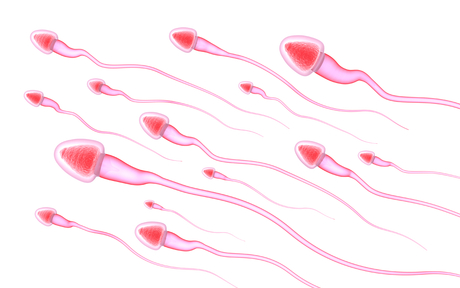Conception: an epic quest

University of Sheffield Professor Allan Pacey has released a handy summary of the journey undertaken by sperm from production to conception, fighting to stay ahead of 250 million rivals along the way.
In a short article and accompanying infographic, Professor Pacey reveals that sperm production in the testicles takes about 70 days, with an additional two weeks for the sperm to receive finishing touches while passing through a long, winding tube called the epididymis. After leaving the epididymis, they can remain healthy and motionless in the man’s body for several weeks.
Once ejaculation occurs, sperm stored at the end of the epididymis are propelled by muscular contractions through a tube called the vas deferens and then into the tube passing down the penis. The average ejaculation of semen contains 250 million sperm, but only the fastest, healthiest and luckiest will survive the journey from the vagina to the cervix — 99 out of 100 will die trying.
Women have two fallopian tubes (one for each ovary), but only one ovary releases an egg in any given cycle. Sperm must therefore head for the fallopian tube toward the ovary releasing an egg. Furthermore, the fallopian tube entrance is tiny (only a few sperm heads wide), so those sperm that swim too erratically are locked out.
Only about 100 of the 250 million sperm ejaculated reach the fallopian tube, where they tend to stick to the inner walls waiting for a signal that the egg has been released. Once they receive this signal, they detach themselves from the inner walls by increasing the beat in their tail to give them extra thrust — a frenetic swimming style called hyperactivation.
Sperm swim toward the middle of the fallopian tube in the direction of the ovary in order to find the egg that will shortly be coming the other way. The egg is surrounded by a cloud of cells called the cumulus, which the hyperactivated sperm must swim through before it can reach the egg surface. Only one or two sperm will get close enough to the egg to have any chance of fertilising it.
Once reaching the surface of the egg, a bag of enzymes on the top of the sperm head bursts. These enzymes help dissolve the outer membrane of the egg and, in combination with powerful tail thrusts, helps the sperm penetrate the egg.
Once the sperm is inside, an immediate chemical reaction hardens the egg membrane to stop any other sperm from following it. Over the next few hours, the sperm tail is detached and the chromosomes inside the sperm head separate to line up with those from the egg. The process of forming a new baby has begun.
The infographic and article can be viewed here.
Govt announces $158m in funding for three new CRCs
Minister for Industry and Science Ed Husic has allocated $158 million to three new Cooperative...
Why are young plants more vulnerable to disease?
Fighting disease at a young age often comes at a steep cost to plants' growth and future...
Liquid catalyst could transform chemical manufacturing
A major breakthrough in liquid catalysis is transforming how essential products are made, making...





